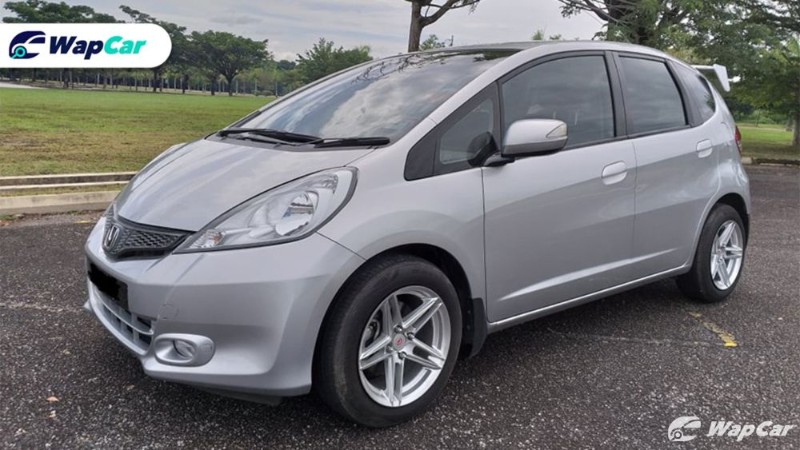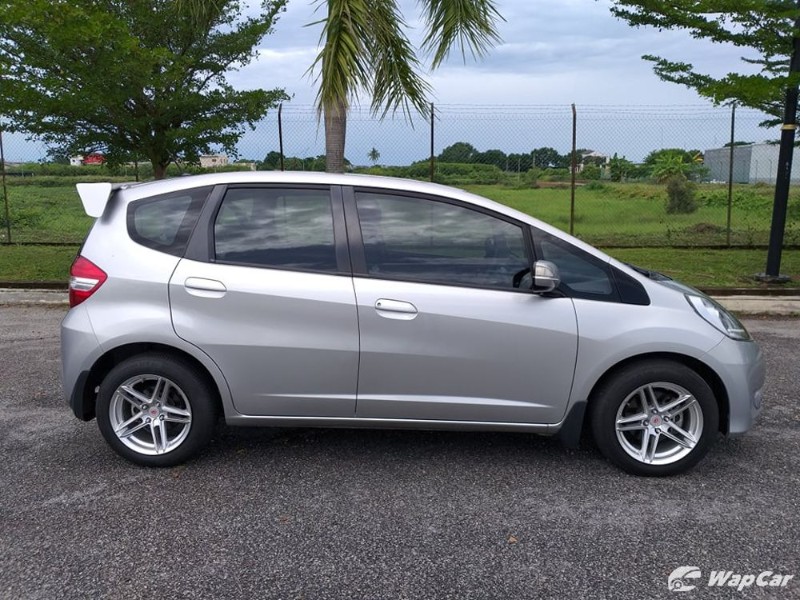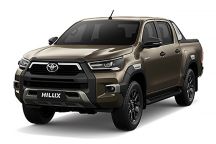
About My Car
First of all, I would like to thank WapCar for giving me a chance to do this write-up as I am a huge fan of car technology advancement and always try to stay up to date with the latest happenings in the automotive industry via their various social media platforms. Writing this review couldn’t have come at a better time. My car will be 7 years old this month as my parents bought this Honda Jazz Petrol CKD 1.5L back in July 2013. It was in this very month that the second-generation CKD Jazz rolled out from Honda Malaysia’s Melaka plant on 11th July 2013 becoming the second Jazz variant to roll out from the factory after the CKD Honda Jazz Hybrid that was launched in November 2012.
It was priced at RM74,800 OTR which made it the most affordable Honda car in Malaysia at that time undercutting the 2013 Honda City Grade S (base spec) by RM11,180 which was on sale at a price of RM85,980 and the Grade E (full spec) came at RM90,980. It was a deal that was indeed worth it and pure value for money as both cars have the same L15A 1.5-litre i-VTEC SOHC engine with 120PS of power and 146Nm of torque.
This second-generation Honda Jazz was first introduced here in August 2008 in two grades which were the ‘S’ priced at RM104,800 and the ‘V’ priced at RM109,800. The mid-life facelift came in April 2011, bringing a singular Grade V with a revised, sportier appearance for RM109,800, unchanged from the pre-facelift car. The Jazz Grade V was then replaced by a Jazz Grade S in August 2012, which brought down the OTR price to RM99,800. Despite the RM10k lower price tag, the non-hybrid Jazz didn’t make much sense beside the then CBU Japanese imported RM94,800 Jazz Hybrid, which is a tax exempted car.
As you can see, it was a massive deal not to be missed. This car was a whopping RM35,000 cheaper than when it was first introduced. I can’t remember when a B-segment hatchback was ever priced that high, even the current 2020 Mazda2 cost slightly above RM100k with the latter being fully imported from Japan as well.
Reasons Why I Bought This Car

In 2013, I was a Form 5 student and was waiting to get my driving licence towards the end of the year. My parents bought this car for me so that I could use it to commute to university as soon as I finished my secondary school education. Besides, the attractive price offered by Honda Malaysia was great because, in the long run, this car would have great resale value. It is also proven that the ‘6 figure’ pricing for the first-generation and second-generation pre-facelift Honda Jazz was unattractive as many customers preferred to go for cheaper options like the Perodua Myvi, Ford Fiesta, Mazda 2 or Kia Rio during that time. Honda Malaysia needed to lower its prices to be more competitive and rightly so, we can see many second-generation facelift (Petrol and Hybrid) versions and third-generation Honda Jazz on the roads.
I knew it would be an ideal car for me to use because hatchbacks are often used in driving schools worldwide. Therefore, driving this car would boost my confidence on the roads because it is just the right size for a driver with a ‘P’ licence. Who would have thought that 7 years on, I’m still loving every drive in this cute little hatchback? It is indeed a reliable car as with most Japanese cars out there in the market which includes legendary Japanese cars like the Nissan Sunny, Toyota Corolla KE70, and the 2-door first-generation Honda Civic Hatchback which you can still find some of them on the road till today in pristine condition!
Car Selection Process

Selecting this car over other B-segment hatchback rivals during that time such as the Suzuki Swift, Perodua Myvi 1.5 SE, Kia Rio, Mazda 2, Ford Fiesta, Volkswagen Polo, Mitsubishi Mirage, Peugeot 208, Chevrolet Sonic, Nissan Latio Hatchback and the Proton Suprima S was no easy task. If you ask me why choose hatchbacks over sedans? I would say it is because of the sportiness these cars have. Besides, Hatchbacks have a greater power to weight ratio than sedans. When a formula like this is derived, aspects like acceleration, fuel efficiency and handling are significantly better in hatchbacks albeit with the lack of boot space. Other than this aspect, they just feel great to drive like good looking rally cars in which the majority of them are hatchbacks.
Hatchbacks with the same engine capacity as their sedan rivals tend to perform better on the roads. This can be seen when the compression ratios (CR) of the Jazz and City are compared. The Jazz has a CR of 10.4:1 whereas the City has a CR of 10.3:1. A higher compression ratio (CR) is beneficial for engines. That’s because the higher ratio allows for an engine to extract more energy from the combustion process due to better thermal efficiency. Higher compression ratios allow the same combustion temperatures to be achieved with less fuel. That leads to a longer expansion cycle, more mechanical power output and lower exhaust temperatures. Although there is only a slight difference between the two ratios, but when the pedal is being floored, a significant difference can be seen especially with the Honda Jazz being a lighter car compared to the Honda City. With that being said, my family didn’t opt for B-segment sedans.
This Honda Jazz CKD’s price reduction was brilliant as it was priced lower than the majority of the hatchbacks mentioned earlier. It was literally a ‘tax holiday’ by Honda back then as no other cars in any segment had this significant reduction in price. The Jazz was priced about RM15000 more than the Myvi 1.5SE in 2013 and the difference in prices for the top-spec models in 2020 is around RM30000 (Myvi AV is around RM55000 and Jazz V is around RM85000). It is a big comparison compared to the current car market value.
Buying Process

This Honda Jazz Petrol 1.5L was only available in a single variant which was the ‘V’ spec. We were very curious to see what this car had to offer. My family went for a test drive as soon as it was launched we were very satisfied with the car from every aspect. Therefore, my parents booked it within 1 week. We chose the Alabaster Silver Metallic Colour as Silver represents one of the most premium colours for a car. We collected the car from the showroom 2 weeks after it was launched. We were one of the first few buyers and we were lucky enough to get a rear spoiler installed on our car as part of a free gift. The car immediately looked sporty from the rear which is far better than the rounded rear look without a spoiler. I’m glad my family made the right decision to purchase the Honda Jazz among the various choices of B-segment vehicles!
User Experience

In terms of space, Honda is undoubtedly a champion showcased by almost all of its vehicles. My Honda Jazz is fitted with Ultra Seats which makes the ultimate transformation to a cosy 5-seater cabin to fit whatever I need with ease. I am indeed inspired by these unique seats which comprise of Utility mode whereby a whole bicycle can be stored when both the rear seats are lowered, bringing a total of 1321 litres of space in the rear cabin. Besides, there is the Long mode which simply allows me to load long items by reclining the front passenger seat and rear seats. Lastly, my favourite one of the lot, the Tall mode. This feature allows me to fold up the rear seats and create over 4-feet of floor to ceiling space. This perfect to load any tall items like potted plants.


In terms of performance, I really do enjoy driving this car. Town driving gets me around 11km per litre and Highway driving gets me around 14km per litre. A full tank can get me around 380-400km range of fuel. This is very impressive for its fuel tank capacity of 42 litres. The L15A 1.5L i-VTEC engine gives great fuel economy, clean emissions and ample torque. Moreover, this engine is rated as ‘The 7 most reliable engines in Malaysia’ by Wapcar in its article on 3rd July 2020 as it has been around for the last 12 years. This shows that it has received full trust and support by its loyal users worldwide.

Besides, this car comes with 5-speed auto gearbox (5-AT) transmission compared to a CVT. In my opinion, this is indeed better because a CVT-equipped vehicle often experiences the occasional sudden loss of acceleration and overheating. Many drivers complain of jerking, slipping, and shuddering. CVT belts can suffer excessive stretching and wear. Back to my point, this 5-speed gearbox allows me to achieve full throttle with this racing-inspired feature. When driving on the highway, the engine’s rpm does not exceed 3500rpm which is a good thing. When the engine’s RPM is low, it is at its most efficient level. Therefore, higher speeds can be enjoyed with higher fuel efficiency at the same time. I have to admit, sometimes I feel like I’m driving a car with a turbocharged engine. This car gives the thrills similar to cars with 1.2L Turbo engines.

Furthermore, this car comes with shift hold control. I enjoy this feature very much as it reduces unnecessary gear changes in cornering and supplies acceleration immediately after making a turn. The ‘vroom-vroom’ feeling from the VTEC engine can be felt at this moment. This makes driving this car fun. Power boost is delivered by this superb engine at the right times and the gear upshifts at the ideal moment.

Even though this car comes with only dual SRS airbags, the chassis is pretty solid for a car this size. This is because of the G-Force Control Technology (G-CON) platform on which it is built upon. Besides, it was one of the first few B-segment vehicles to be fitted with Vehicle Stability Assist (VSA). I’m thankful for this feature as it controls sudden changes in vehicle behaviour, keeping me in control while reducing to counter-productive driver tension. The braking system is great too as it comes with ABS and EBD.

The suspension is made stiffer more towards continental cars like the VW Polo. The suspension system is specifically-engineered to minimise glitches at corners and maximise driving comfort on straight roads. Due to its weight of 1110kg, driving at speeds of between 80-120km/h are relatively easy because it has enough grip on the road. Despite being almost 200kg heavier than the Perodua Myvi, the power generated is still efficient as the fifth gear in this car is able to sustain between 3000 to 3500rpm and bring the car up to speed more rapidly. Hence the pickup of the car is being maintained and not stagnant at fourth gear with high revs like other cars with 4-AT gearboxes. I have since covered around 40,500km in the last 7 years which is about an average of 5800km a year. There have not been any problems with this car besides the airbag inflator recall for the Driver and Passenger Airbags by Honda Malaysia a few years ago. I’m grateful to Honda for making safety their utmost priority in order to prevent any unwanted incidents happening to owners and passengers of Honda cars. Other than that, everything in this car is in perfect condition!


Pros
- Powerful engine for a small chassis

I love the design of the engine as it clearly shows the 4 pistons being enclosed in a die-cast engine block.
- Very practical and has plenty of legroom/headroom

The picture shows the legroom/headroom available. Only the Perodua Myvi can rival this feature.
- Great stock sound system with 4 speakers

I love the huge buttons present here. It makes it very user-friendly!

The picture shows one of the speakers. As in most Japanese cars, the volume increases with speed. This is a cool feature. The Bass and Treble modes are also well proportioned to make the music sound better. There is no vibration or rattling sounds produced by the doors when the radio is being played at a high volume, which is a good thing!
- Plenty of storage spaces

There are a total of 10 cup holders in the cabin ( 6 front and 4 rear). This is simply amazing for a car of this size. This means all 5 passengers in the car can have a second drink if one is not enough!

The picture shows the dual glovebox compartments. This feature is very handy to keep small to medium sized items.
- Has Solid Disc rear braking system

Solid disc brakes at the rear tyre. Solid disc brakes are better than drum brakes as it is better at slowing the car down, has better heat dissipation, less likely to trap dust and water.
- The presence of Ultra Seats

The picture shows the Ultra Seats being folded in Tall Mode. Unlike other cars, the Jazz has a fuel tank in the centre of the car, which allows for versatile loading space from different angles. This feature is not present in other B-segment hatchbacks out there as their fuel tanks are located under the rear seats of the car.
Cons
- No volume/mode controls and Paddle Shifters on the steering wheel

There were volume/mode controls and Paddle Shifters present on the steering wheels of foreign market Jazz during that time.
- No Sport mode

The picture shows the gear stick of my Jazz. The closest I could get to a sport mode is shifting the gear into D3 for added acceleration when overtaking.
- No leather seats

The picture shows the seats which are made of blue-black fabric combination. The quality of the seats is quite good. However, only the driver seat comes with armrest. Besides, they are supportive on long journeys, although I wished it was made in leather-like in other markets.
- No Sunroof

The picture shows the headliner of my Honda Jazz. Notice the rectangular-shaped groove in the front section of the car near the map light. That is the location where the sunroof is supposed to be, just like in other markets. The template was ready, but sadly it was not assembled onto the CKD Jazz.
- No front parking sensor

The picture shows the front bumper of my car. I wished it had parking sensors, especially when parking in tight areas.
Ratings
Total score: 4/5
Performance: 4/5
Quality & Features: 4/5
Space: 4/5
Ride Comfort: 4/5
Fuel Economy: 3/5
Price & Cost: 5/5
In conclusion, the Honda Jazz is an excellent car to drive. The future of the Honda Jazz looks bright especially with the new 4th generation 2020 Honda Jazz that is slated to hit our shores in the next few months. I’m excited to see what features that car has to offer for the Malaysian market. Honda is always passionate when it comes to technology, making sure cars are built well with reasonable pricing to suit all generations. The i-VTEC engines are indeed very reliable with enhanced improvements over the years and for many more years to come!









